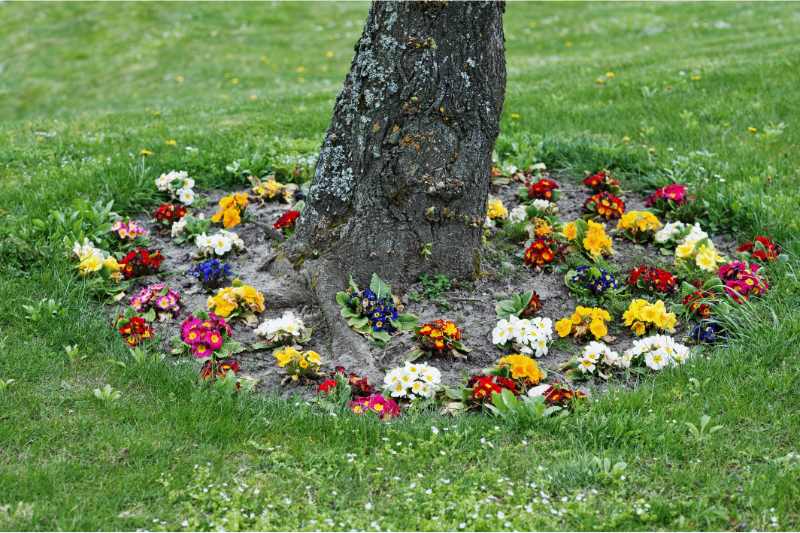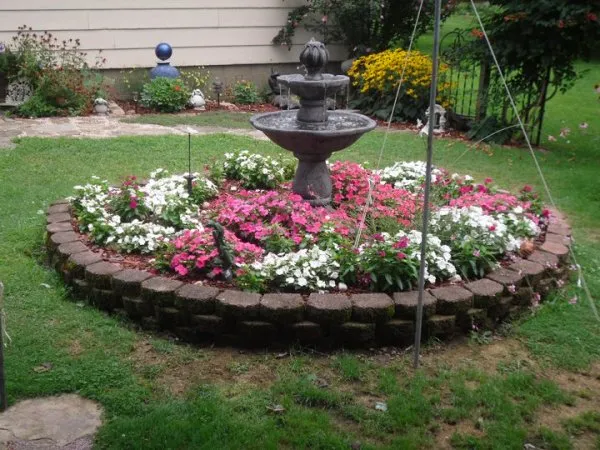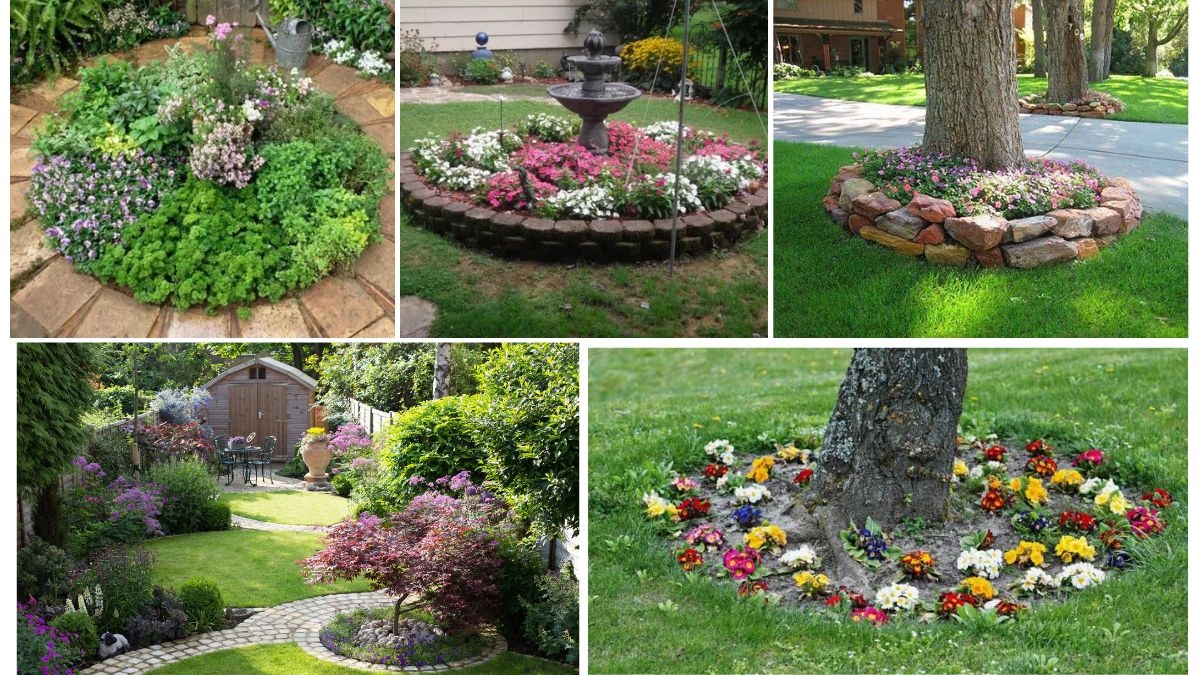Creating a circular flower bed around a tree is one of the most charming and practical ways to add depth and personality to your landscape. Not only does it make an otherwise plain tree base more attractive, but it also allows for creative planting opportunities that thrive in partial or full shade.
In this comprehensive guide, you’ll learn everything you need to know about building a beautiful circular flower bed around your trees — from planning and design to selecting the best plants and ensuring your tree remains healthy and thriving.
Why Build a Circular Flower Bed Around Trees?

- Aesthetic Appeal
Circular flower beds naturally draw attention to trees, turning them into visual garden focal points. - Efficient Use of Space
Instead of leaving the space under trees bare or covered in weeds, you can transform it into a vibrant plant display. - Shade Gardening Opportunities
Many shade-loving plants thrive in these spaces, adding color and variety to your garden palette. - Reduces Maintenance
When designed properly, flower beds can reduce lawn mowing and weeding effort around the base of trees.
Step-by-Step: How to Build a Circular Flower Bed Around Trees

Step 1: Choose the Right Tree
While most trees can accommodate a flower bed, avoid trees with shallow roots or those sensitive to changes in soil level (like oaks or maples). Ideal trees include:
- Elm
- Linden
- Pine
- Dogwood
- Crape myrtle
Step 2: Plan Your Circle
Use a garden hose or string to define your desired bed diameter (typically 3 to 6 feet, depending on tree size). A good rule is to stay a few inches away from the trunk to avoid damaging the root flare.
Step 3: Remove Existing Grass and Weeds
Cut and lift sod using a flat shovel or edging tool. This helps reduce future weed growth and prepares the area for planting.
Step 4: Edge the Bed
Use bricks, stones, metal edging, or plastic landscape borders to define your flower bed. A raised edge gives a clean, professional finish and helps retain mulch and soil.
Step 5: Improve the Soil
Most trees compete heavily for nutrients. Add a 2–3 inch layer of high-quality compost or garden soil to help flower roots establish easily. Avoid piling soil directly against the trunk.
Step 6: Choose the Right Plants
Pick shade-tolerant or partial-shade plants. Consider the tree type, water needs, and root depth of both the tree and flowers.
Great options include:
- Hostas
- Ferns
- Astilbe
- Impatiens
- Heuchera (Coral Bells)
- Lily of the Valley
- Bleeding Heart
- Lamium
Combine a mix of low-growing fillers, mid-height color plants, and taller accents for depth.
Step 7: Mulch Properly

Use organic mulch (bark, pine needles, or wood chips) to retain moisture and suppress weeds. Keep mulch 2–4 inches deep, and maintain a gap of 4–6 inches around the tree base to prevent rot and pests.
Step 8: Water Regularly
Initially, water new plantings deeply and consistently until roots establish. After that, monitor soil moisture based on rainfall and shade.
Flower Bed Design Ideas Around Trees

1. Layered Look
Place taller plants at the back and progressively shorter ones toward the edge. This creates a cascading effect and adds visual interest.
2. Color Palette Theme
Choose a single-color theme like whites and silvers for a moon garden or go bold with purples, reds, and yellows for vibrancy.
3. Evergreen Groundcovers
For year-round appeal, use ground covers like Pachysandra, Ajuga, or Vinca minor under the tree with seasonal color pops around the border.
4. Herbal Circle
Mix in herbs like mint, oregano, and lemon balm that tolerate partial shade — fragrant and functional!
Tips for Tree and Plant Health

- Avoid Soil Compaction: Don’t stand or stomp heavily near the tree roots. Minimize disruption during planting.
- Don’t Smother Roots: Keep mulch and soil away from directly covering root flares.
- Choose Non-Invasive Plants: Avoid aggressive species that could compete or choke tree roots.
- Use Drip Irrigation: Delivers water efficiently without over-soaking tree roots or washing away mulch.
Tools & Materials Checklist
- Garden hose or rope (to mark circle)
- Edging materials (stones, bricks, or plastic)
- Flat shovel or sod cutter
- Compost or enriched garden soil
- Shade-loving plants
- Mulch
- Watering can or hose
Optional:
- Solar lighting for ambient nighttime glow
- Garden statue or small bench for added charm
Benefits of Shade-Loving Plants Around Trees
Many plants that thrive in tree flower beds are naturally adapted to lower light and cooler soil, making them low-maintenance and reliable performers.
Examples of popular performers:
| Plant Name | Light Needs | Height | Flower Season |
|---|---|---|---|
| Hostas | Partial shade | 12–36″ | Summer |
| Astilbe | Partial shade | 12–24″ | Late Spring |
| Heuchera | Shade/Part sun | 10–18″ | Spring-Summer |
| Lamium | Shade | 6–12″ | Spring |
| Impatiens | Partial shade | 10–24″ | Summer-Fall |
Eco-Friendly Tip
Use natural leaf mulch or compost from your yard to build the soil organically. It’s a sustainable way to nourish your plants without synthetic fertilizers.
Conclusion: A Garden Feature That Lasts
Building a circular flower bed around trees transforms your garden from plain to polished. With a bit of planning, the right plant choices, and thoughtful design, this small project can yield year-round beauty and shade garden elegance. Whether you’re highlighting an old oak or decorating a young maple, a well-designed circular bed blends form and function — making your landscape more inviting and unique.






Leave A Comment